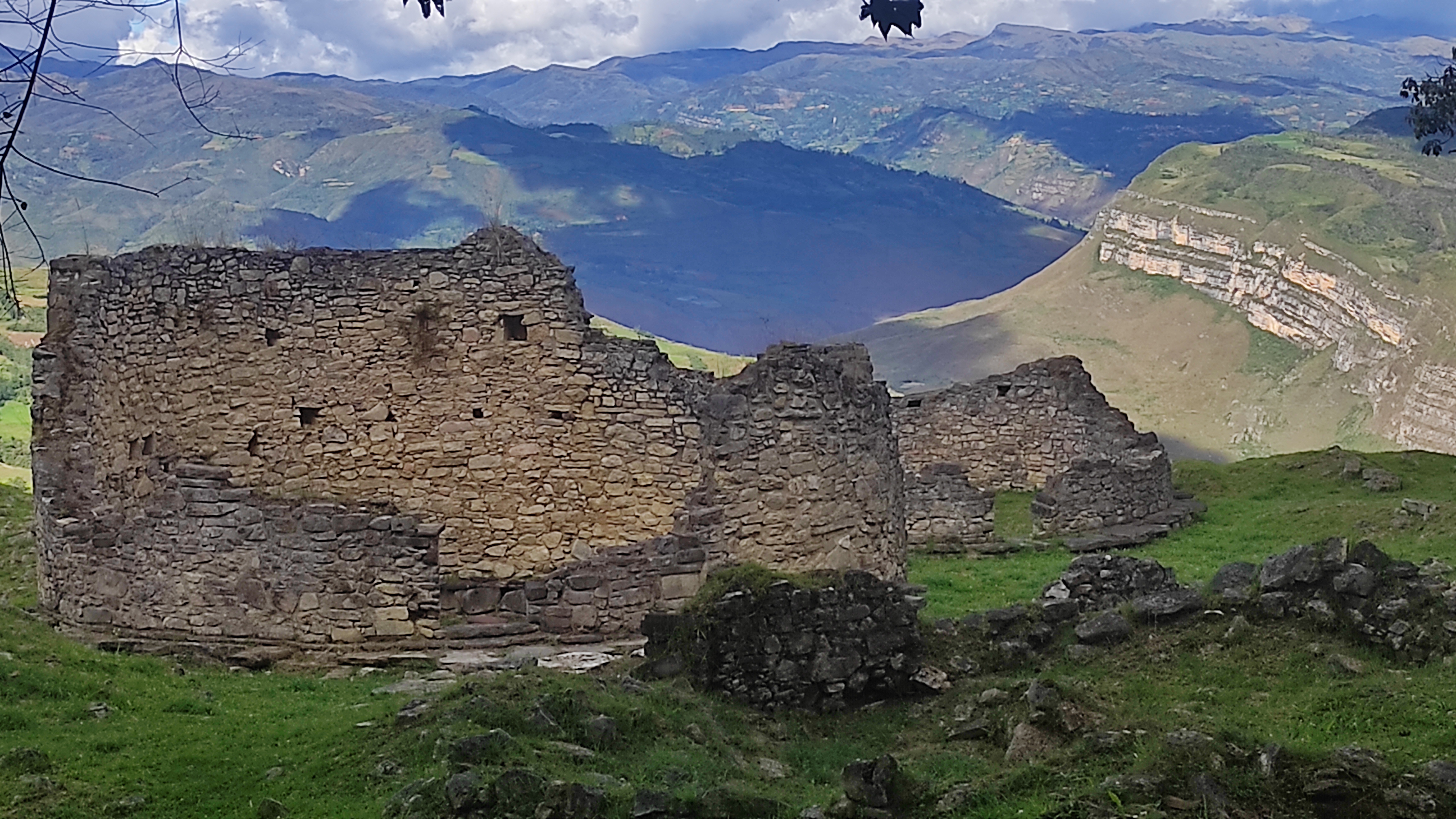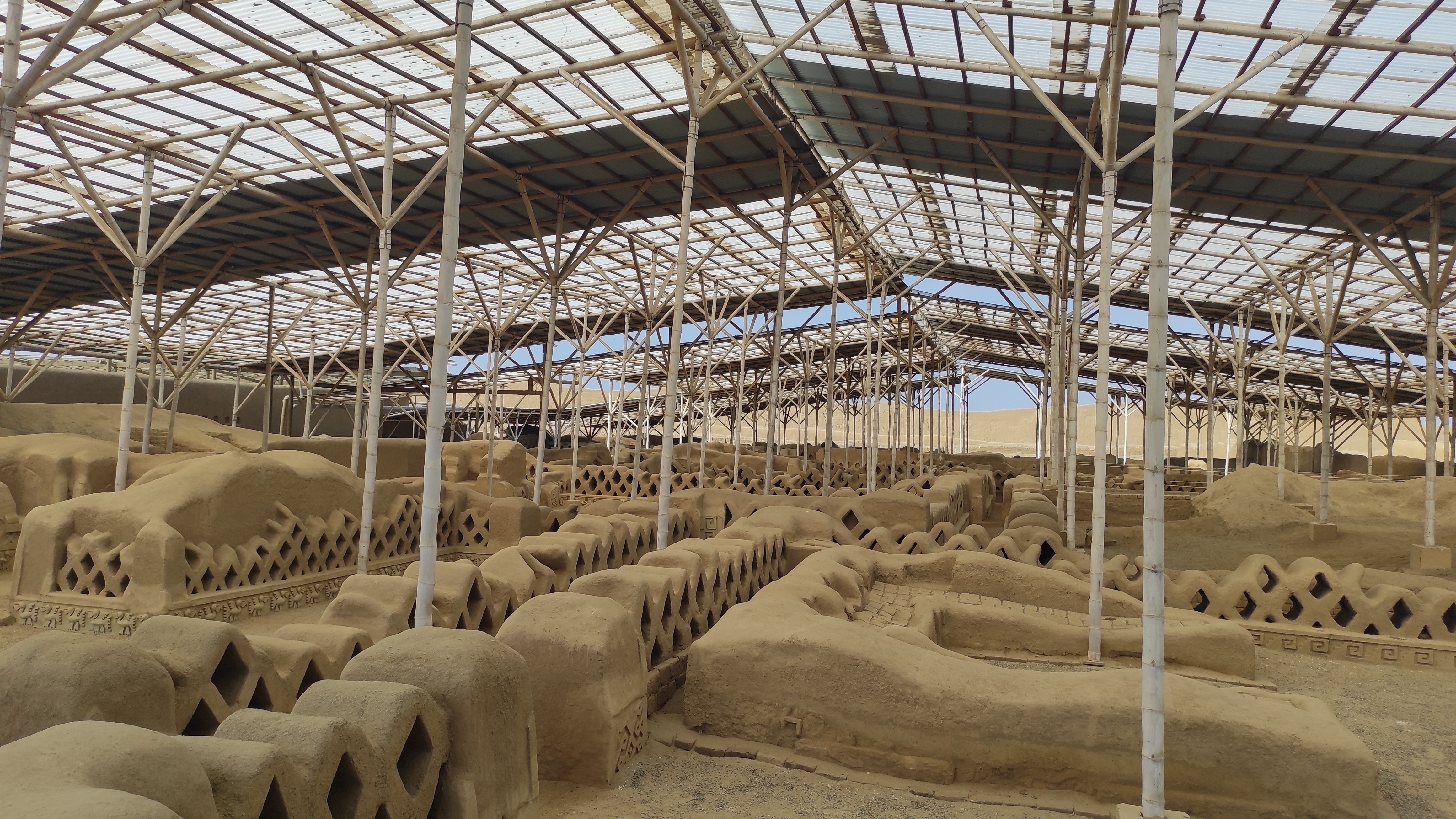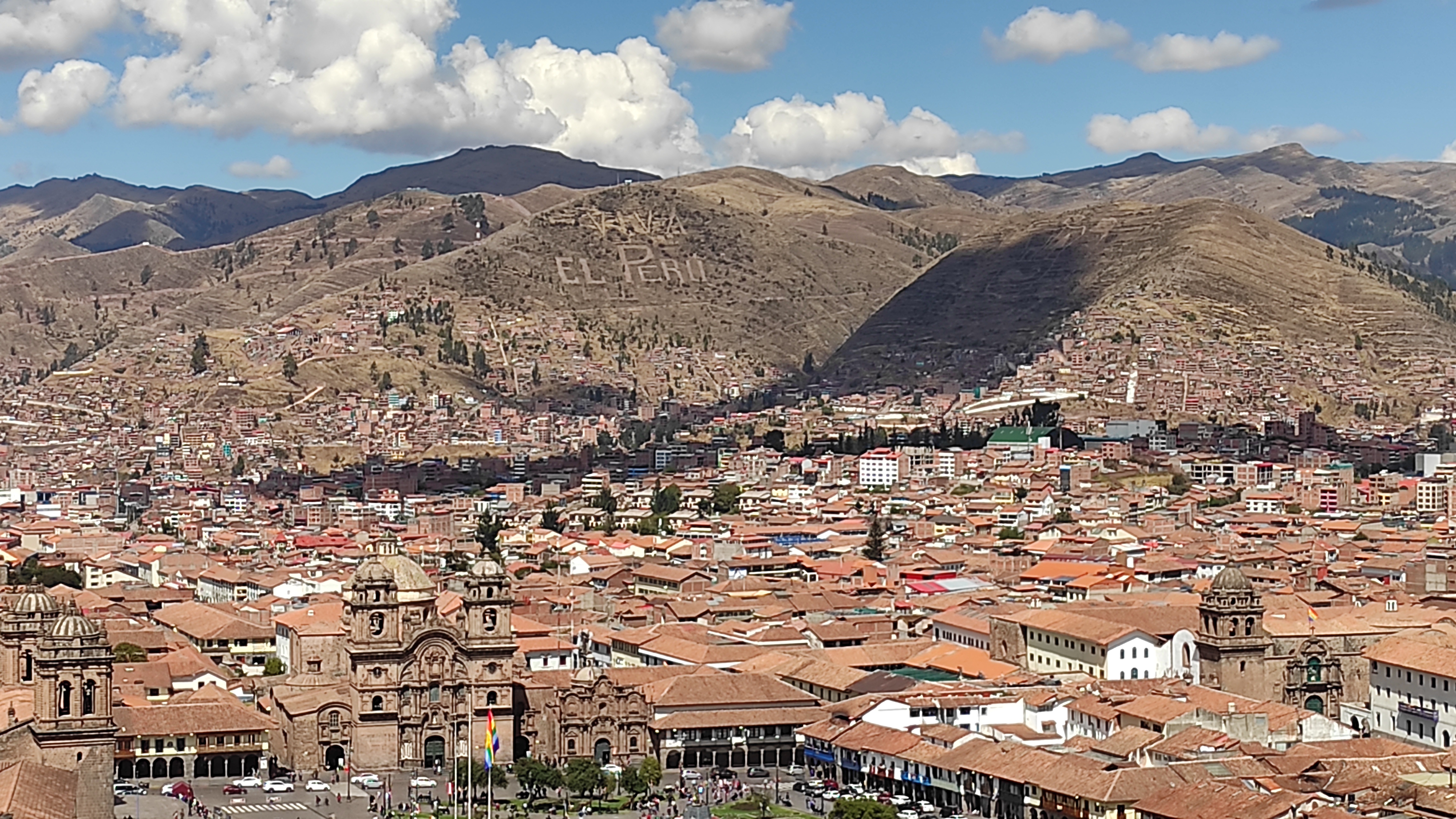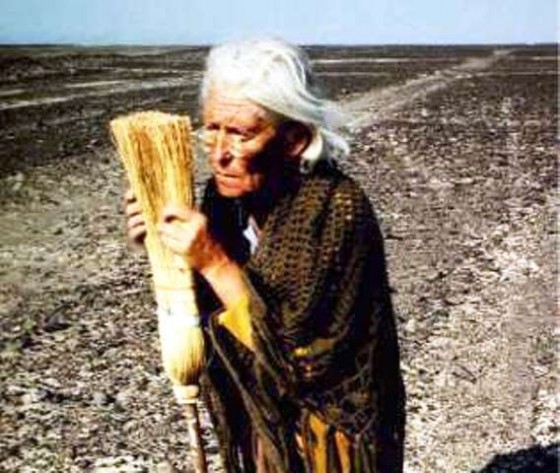When I first met Dario, she was sitting in the busy lounge room of an hotel in Cappadocia carved into tuff, where most of the guests (us included) were staying for a short period of time, long enough to visit the beautiful Goreme and its surroundings. Her particular attention to details, the cure that she had for her outfit and her ancestral appearance had a certain fascination on me and I decided I wanted to know more about her story. In the next couple of days we had the chance to spend some time together and go hiking. I was very much interested in her tales about her native land, the food culture, the Inca empire and all the pre-colombians and pre-inca culture.
Honestly Perú was initially not on my travel list. The dangers of Colombia, the night life, the street culture and the music scene always attracted me more but also because of that random encounter, I decided I was going to prolong my stay in South America and visit one more country (that at the end turned out to be two, because due to my self-imposed ban on flying when I travel, I couldn't avoid entering Ecuador).
So first of all I decided how to get into the country. After a bit of planning I chosen to avoid the coast road, since I heard Mangora is supposed to be quite a turistic place, surrounded by surfers and maybe not exactly the thing I was looking for for that occasion. I decided then to take the internal way, another rough and long journey through the jungle that lasted almost the whole day, from Vilcabamba to Jaen. I was heading to Chachapoyas, chacha for the locals, a nice city in the north-eastern part of Perú where after having ventured up to 3000m on a cable car challenging my vértigo fear, I saw the first beautiful ruins of a precolombian local culture. The site is called Kuelap and it is definitely a place you should put on your list.

The next archeological magical site I had the chance to experience was Chan Chan and it is located in Trujillo, Pacific coast of Perú, not close to Chacha at all. There I learnt about the brutality of the Chimú culture (900AD - 1470AD), the respect, the fear and the obsession they had for mother nature and for El Niño, a natural phenomena that took them to the point of sacrifying young local virgins in order to mitigate the heavy rains that would have killed the whole harvest. El Niño is a regular phenomena that occurs every two to seven years because of the warming of the water of the Pacific ocean, mostly regarding the coastal pacific area of south America that can create heavy rains and lots of damages all along the coast.

The southern you go in the country, the closer you get to Cusco, the majestic Inca former capital. An amazing place that nowadays changed drastically becoming more cosmopolitan but without losing its flair, where travellers like to make their own base for the time they are there to visit the valle Sagrado and all the attractions this valley has to offer. The main ones are of course the ruins of Macchu Picchu that if visited with a certain spirit of self-sacrifice (which includes a never-ending number of steps and a cruel wake up call at 4am) can still give a certain pleasure and sense of autenticity, despite mass tourism and tourist buses running up and down all the surrounding and challenging street mountains. My suggestion is to go up as much as possible, to the peak of Huaynapicchu and look down from there. Macchu Picchu was never conquered by the spanish and somehow still looks the way it was, with its attitude to embrace the sun, a vital burning spot in the sky for the Inca that has been celebrated every year ever since during the Inti Raymi Cusco's local street festival that hounours the sun God. The inca civilisation started around the XIII century and lasted until 1572 when the last state fell under Spanish conquerors. The official language was made by a group of languages called Quechua, approximately 45 languages, spoken by a population of 12 millions inhabitants or runa as they like to call themselves, as a group of people that shares the same language runa simi. The inca cosmovision was transmitted through oral tradition and includes a unique concept of space and time called pacha. The word pacha was also used as a suffix to determine other things like historical phases, fundamental changes and harvest time. Pachamama or Allpamama for instance, means "earth mother", the entity that presides over planting and harvesting, the mother of the four cosmological Quechua principle: water, earth, sun and moon.

The Nazca were the inhabitants of the Ica valley between 100BC and 800AD and were mostly famous for drawing the Nazca lines, those incredibly interesting lines drawn in the desert and somehow became mythological. This civilisation saw it ends probably because of the natural phenomena called El Niño that is already mentioned above. There are various theories about how and why the Nazca lines were made. The most common one is that they were made simply by pulling a rope between two posts and removing the pebbles in that area, in order to mark the soil under it in that way. The lines represents different animal shapes (monkeys, birds, etc.) for a total of 300 figures and the theories behind their existence is still up to discussion. The lines might be a way for the indigenous to try to communicate with the divinities above or they could represent an astronomical calendar.
Maria Reiche was a german wanderer and mathematician from Dresden that first moved to Perú for a teaching job and came across the mysterious phenomena of the Nazca lines. Once she got to know about it, she decided to move to Nazca and spend most of her life doing investigation on the subject. She discovered about 50 different figures, helped to make the lines available to public and obstacle those who wanted to use this piece of land for other purposes. If nowadays the Nazca lines are on the UNESCO list of the world heritage site it is probably because of the "gringa loca", a name that was given to her by the local community, maybe (probably) in a dispregiative way but I like to think more in a friendly one.

Nowadays the german lady still has a pretty strong influence on citizen's imagination and around town you can spot her face on various graffiti. The tales of her, walking for about 30/40km everyday along the highway to reach the lines from Nazca city are also still pretty recurrent.
On my way out out Cusco, I got involved into a random chat with the taxi driver who was taking me to the airport and I realise that I mistakenly thought that the statue pointing ahead, was the one of Atahualpa. The driver promptly corrected me, saying that the man standing high in the middle of the city was not Atahualpa but Pachacuteq.
Pachacuti was the ninth Sapa Inca, born in the XV century and according to many can be considered the one who elevated Cusco from a chiefdom to the capital of the Inca empire. A Sapa Inca was the monarch of the empire, a man elected by the Inti, the divinity represented by the sun, according to the legend. The Inti is still celebrated nowadays during the colorful fest of the Inti Raymi of Cusco (created by Pachacuti) that luckily I had the pleasure to attend. The Inti Raymi is celebrated on the winter solstice, the shortest day of the year and lasts for nine days. It mostly takes place in the archeological places of Qorikancha and Sacsayhuaman (or sexy woman if you prefer).
It is believed by many archeologist that the historical site of Macchu Picchu was built as an estate for Pachacuted himself. There weren't sign of different social classes living in Macchu Picchu and it also seemed that the place was mostly used for short staying and inhabited only for about 80 years for a population made of less than 1000 people. The place was also never found by the spanish coloners and somehow, thanks to that, keeps its magical purpose despite the thousands of tourists that visit the place everyday.
I had a verse of a song from Paolo Conte regularly coming into my mind ("Finché Atahualpa o qualche altro Dio, ti dica descansate niño che continuo io") during the time I was in Cusco. Atahualpa represented for me the most famous Inca Inti and I believe I somehow felt his authoritative presence while being there. Atahualpa was the last emperor, firstly caught and imprisoned in Cajamarca, where it is still possible to visit the ransom room (el cuarto del rescate) and then sentenced under the sword of Francisco Pizarro. Him and the diseases who spread during that time contributed to the fall of the Inca empire once forever.
Straight after having spent a night on a bus on my way from the sierra down to the coast, I decided to have lunch in a restaurant in Trujillo, on the corner between Jirón san Martin and Jirón Orbegoso called El Rincón de Vallejo. The building was the former house of one the excellence of peruvian modernist literature, César Vallejo. Vallejo was also a political activist, who spent part of his life unfairly imprisoned and had to move to Europe and Russia following his socialist ideals and getting to know some of the most important personalities of that time like Pablo Neruda.
In Más allá de la vida y la muerte, the poet is riding on a horse, connecting with the surrounding nature and the colours of the lemon evening, in a journey that will help him to deal with the death of his mother that happened two years before. The nature around and the noise of his tiredless horse are helping him on the journey, to the point of which after having met his brother, who's surprisingly sitting on a chair in a empty house in the middle of the countryside, finds himself bleeding on a cheek. The two have the chance to hug each other in this oniric tale, before the poet keeps riding through the landscape where a familiar voice followed by the presence of his mum appears in his head making him think about his own death in a welcoming, incredible and comfortable way.
Paul Gauguin was the son of an aristocratic family and he spent his childhood in Perú since his grandfather came from Arequipa. Those years left in his mind a vivid memory that truly inspired the painter for the rest of his life. In fact it is not a mystery that when Gauguin sailed to Polynesia in search of that wilderness that he couldn't find in his native France, the inner familiar voice coming from his childhood was more than just a recurrent riddle, it was more likely the sound of a mermaid.
I learnt about Luis Hernandez when a friend of mine called Dario, told me he worked as a costume designer on the set of a documentary regarding the peruvian poet. Hernandez was part of the generacíon del 60, together with the most famous Mario Vargas Llosa. Hernandez was a doctor with the passion of poetry that did not gain much popularity during his lifetime as a poet but what made people talk about him, was his premature death who turned him into a sort of urban myth. The poet was hit by a train while walking on the railway. It is very likely that this very sensible character couldn't stand life in its cruelty anymore, although in the recent years certain theories about his murder also started to gain consideration.